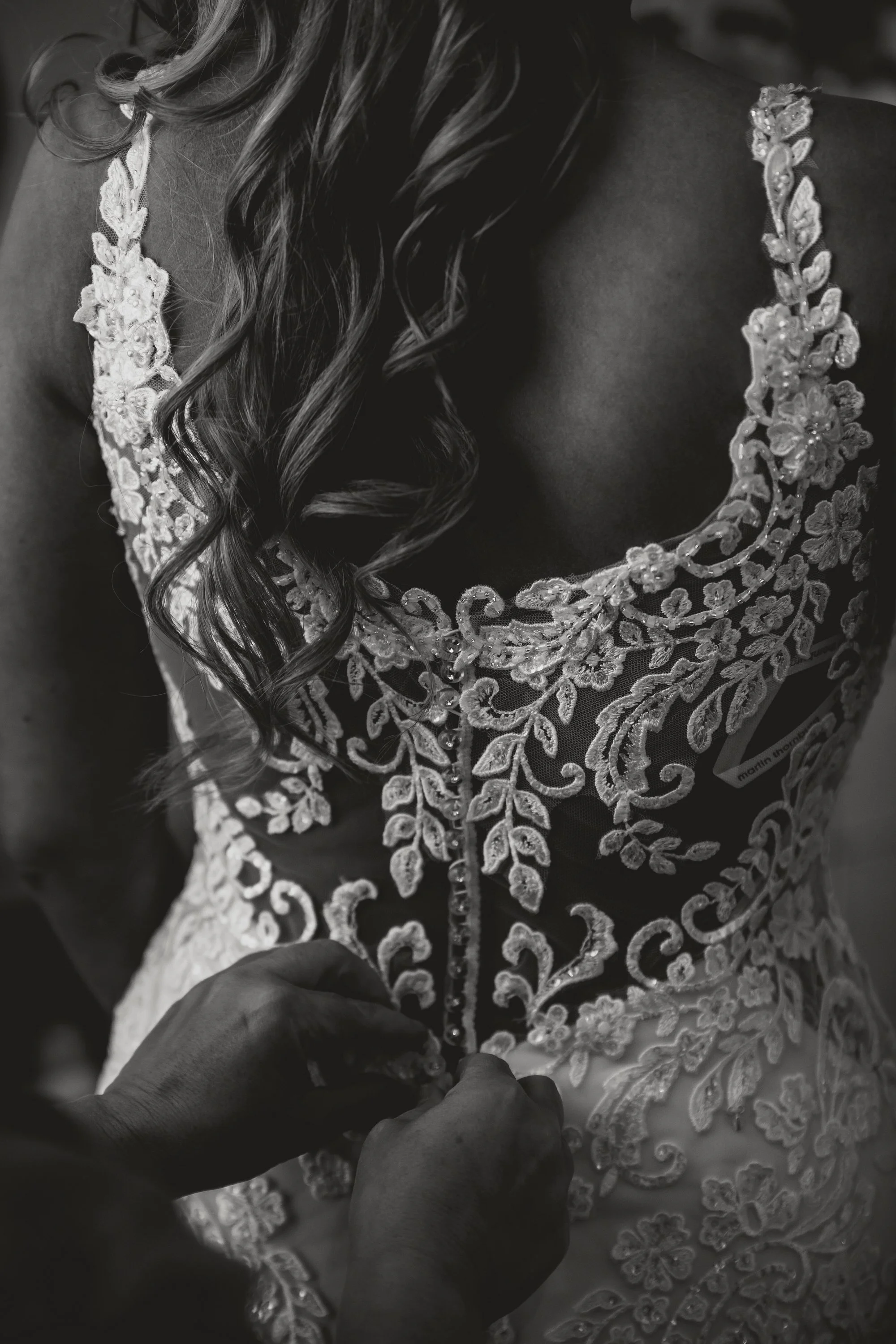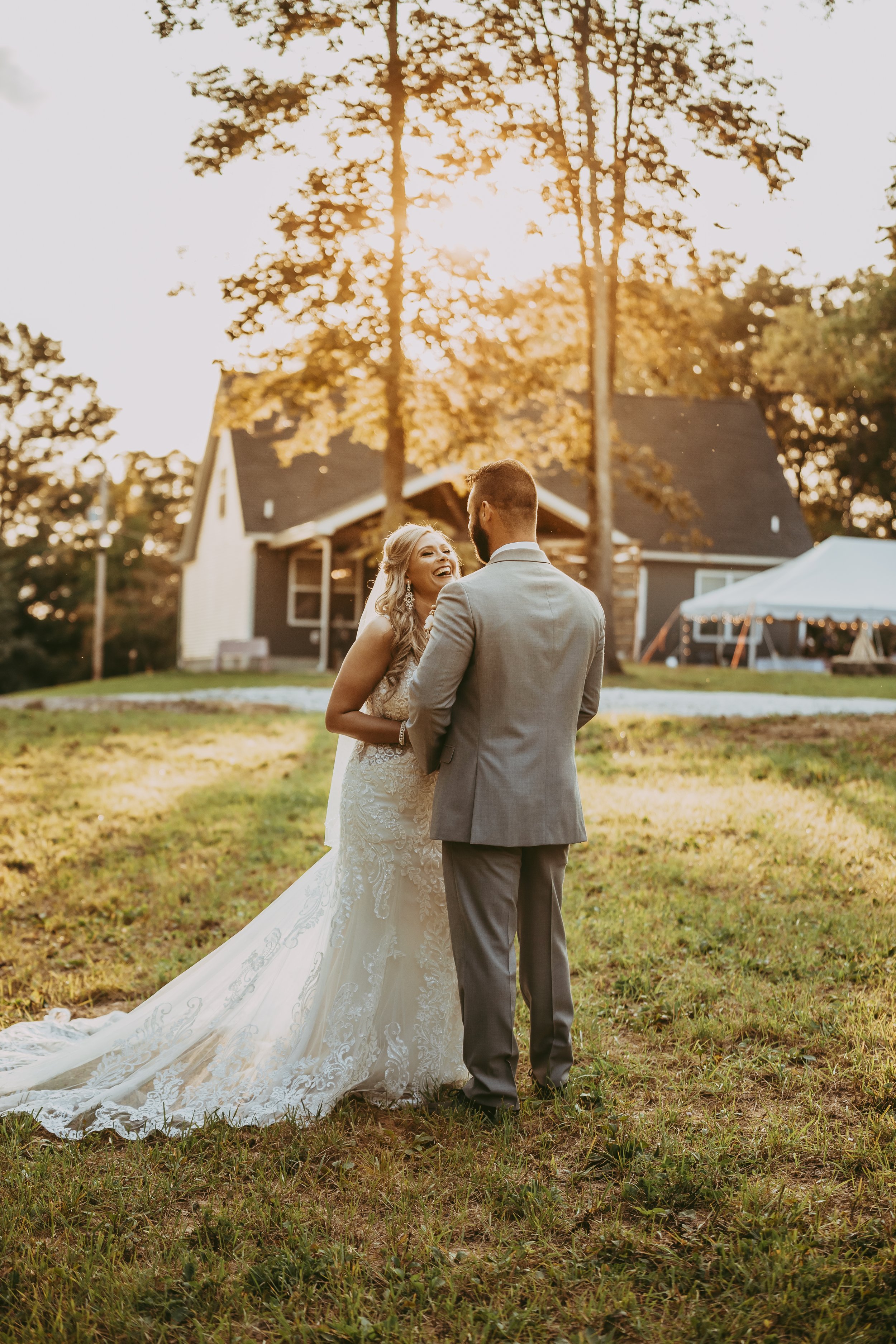Things I Think About When Photographing a Wedding
If you're a wedding photographer, you already know: no two weddings are the same—and that’s exactly what makes this job beautiful, frustrating, and endlessly inspiring.
After years behind the camera, shooting everything from humid July ceremonies to crisp October elopements, I’ve learned that showing up with technical skill isn’t enough. You’ve got to shoot with your whole self—your heart, your instincts, and sometimes, your inner 5-year-old.
So here are some of the things I think about when I’m documenting a wedding. These aren’t rules. These are reminders—creative cues, mindset shifts, and little ways I stay connected to the real reason I’m doing this in the first place.
1. Get What You Need, Then Lose the Rules
Of course, we all have a checklist: vows, kiss, first dance, parent toasts, cake cut. These are non-negotiables.
But once you have the essentials, break free. Lose the rules. That’s when the real creativity kicks in.
Fine detail shots of wedding dress- timeless black and white moments of Mother of the Bride and Bride, Moments that will be cherished by the next generations to come within that family.
-Lay on the ground.
-Shoot through champagne glasses.
-Tilt your camera like you forgot how to hold it.
-Snap the in-betweens: the hair being pinned, the flower girl yawning, the crooked tie fixed in a rearview mirror.
I always ask myself: “What would this look like if I didn’t care about what ‘works’?”
That’s where the creativity lives.
2. Shoot Like a 5-Year-Old
Honestly, just do it.
After the key shots are done, I tap into that childlike wonder—because five-year-olds don’t care about symmetry, they care about feelings.
They get close.
They look up.
They forget the rules.
They notice weird things like shiny shoes or the way light hits a wall.
Cincinnati city skyline with Bride and Groom out of focus - The word Cincinnati is etched out in the center of the image.
Sometimes I crouch down or stand on chairs. I play with blur. I chase light like I’m chasing a butterfly.
If you can tap into that mindset—curiosity over control—you’ll capture magic that even the couple didn’t notice on their wedding day.
3. Ask Better Questions
Before the camera ever comes out, I ask couples weird questions.
Not "What are your colors?"
But things like:
“If your wedding had a theme song, what would it be?”
“Would you rather have a golden-hour portrait or a kiss-in-the-rain photo?”
“Are you more summer sun or fall wind?”
Bride and Groom portrait session following the wedding ceremony outdoor backyard wedding | West Virginia
These types of questions help me understand how they feel—not just how they want to look. Though each wedding day will give you different weather elements, these questions will help you gain a new perspective of their personality.
Weddings are emotional, layered, unpredictable. If you can understand who your couple is underneath the Pinterest boards, your photos will tell their story with real depth.
4. Read the Season Like a Story
Seasonality matters. It affects more than the lighting—it changes the mood of a wedding.
☀️ Summer Weddings:
More light, more movement, more energy.
I lean into warm tones, motion blur, lens flare, and bold edits.
It’s sweaty, chaotic, and fun. I shoot that.
Groom entering the ceremony following behind the pastor
🍂 Fall Weddings:
Slower, moodier, more cinematic.
I lean into contrast, shadows, cozy textures, candlelight, and emotional weight.
I look for the quiet moments: fingers intertwined, soft glances, deep breaths.
Bride and Groom portrait session near The Cleveland Railway Bridge" (also known as the "Old Coast Guard Station Bridge") near the West Bank of the Flats or near the Nautica Entertainment Complex on the Cuyahoga River in Cleveland, Ohio.
Ask yourself, “What does this season feel like?” Then let your editing, angles, and pacing reflect it.
5. Document for Now and Forever
One of my favorite questions to ask a couple is:
“What’s more important to you: a photo that could go viral this week, or one your grandchildren will cherish in 40 years?”
Sometimes, you have to go to the Flower man vs picking a traditional flower girl, You just know there’s going to be a party at this event - The Estate At Sunset Farm | Centerville Ohio
Sometimes the answer is both—and that’s okay.
But it helps me know when to go hard on trend-forward content (like drone shots and flash edits) and when to pull back and focus on timeless, story-first photography.
Being able to balance relevance and permanence is what sets a good wedding photographer apart from a great one.
6. Stay Curious, Stay Human
The technical side matters. I love a sharp prime lens and golden-hour backlighting as much as anyone.
But honestly? The most important tool I carry is curiosity.
Bride and Groom letting loose and dancing with friends and family at Polen Farm, a small, quaint and rustic wedding venue | Kettering Ohio
I watch the room.
I listen more than I talk.
I step back when a moment is unfolding.
I move in when no one else is watching.
Being a wedding photographer in 2025 is not about following a style guide. It’s about capturing something so personal it feels like poetry when they look at it five years later. You have to think about it, you’re likely going to spend the majority of the day with your client, you will want them to invite you in as an honorary member of their wedding party.
Final Thoughts: Be the Photographer You Needed
Every wedding I shoot, I remember the responsibility I have—not just to make it look good, but to make it real.
If you’re a photographer: trust your eye, trust your gut, and never stop experimenting.
Shoot what’s obvious. Then shoot what’s invisible.
Because that’s where the story lives.
– Sheldon James
Sheldon James Photography
📍 Dayton, Ohio | 📸 Weddings | 🖤 Storyteller First








